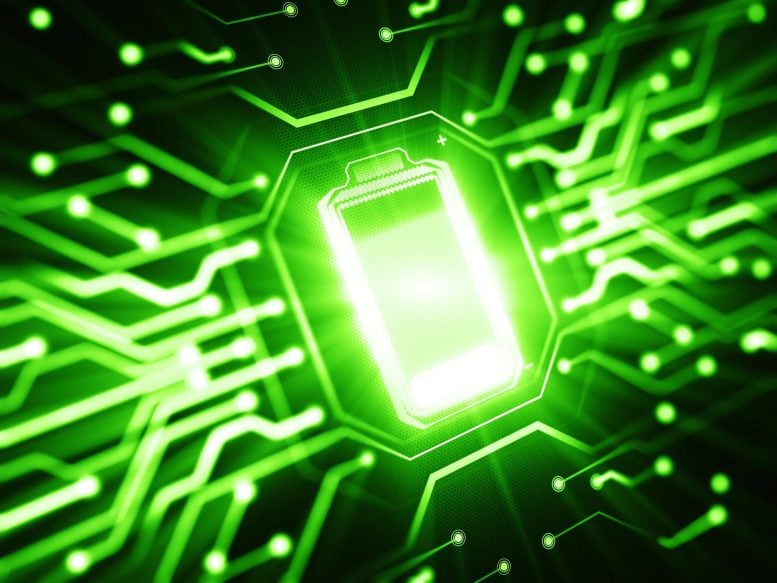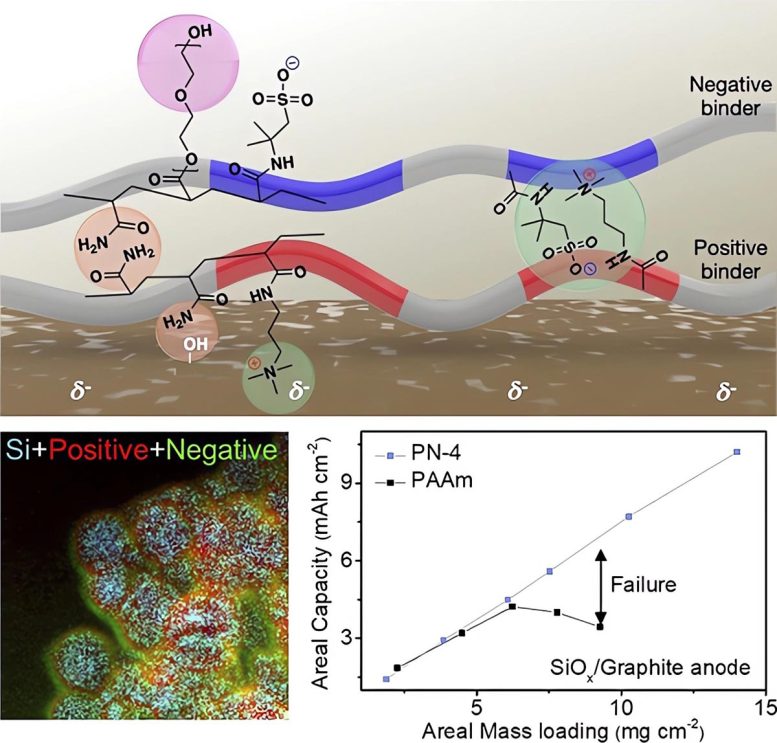
POSTECH-Sogang University joint research team develops layering-charged, polymer-based stable high-capacity anode material.
The electric vehicle market has been experiencing explosive growth, with global sales surpassing $1 trillion (approximately 1,283 trillion Korean Won/KRW) in 2022 and domestic sales exceeding 108,000 units. Inevitably, demand is growing for high-capacity batteries that can extend EV driving range. Recently, a joint team of researchers from POSTECH and Sogang University developed a functional polymeric binder for stable, high-capacity anode material that could increase the current EV range at least 10-fold.
A research team led by POSTECH professors Soojin Park (Department of Chemistry) and Youn Soo Kim (Department of Materials Science and Engineering) and Professor Jaegeon Ryu (Department of Chemical and Biomolecular Engineering) of Sogang University developed charged polymeric binder for a high-capacity anode material that is both stable and reliable, offering a capacity that is 10 times or higher than that of conventional graphite anodes. This breakthrough was achieved by replacing graphite with Si anode combined with layering-charged polymers while maintaining stability and reliability. The research results were published as the Front Cover Article in Advanced Functional Materials.

Challenges in High-Capacity Anode Development
High-capacity anode materials such as silicon are essential for creating high-energy density lithium-ion batteries; they can offer at least 10 times the capacity of graphite or other anode materials now available. The challenge here is that the volume expansion of high-capacity anode materials during the reaction with lithium poses a threat to battery performance and stability. To mitigate this issue, researchers have been investigating polymer binders that can effectively control the volumetric expansion.
However, research to date has focused solely on chemical crosslinking and hydrogen bonding. Chemical crosslinking involves covalent bonding between binder molecules, making them solid but has a fatal flaw: once broken, the bonds cannot be restored. On the other hand, hydrogen bonding is a reversible secondary bonding between molecules based on electronegativity differences, but its strength (10-65 kJ/mol) is relatively weak.
Coulombic Forces: A Game-Changing Solution
The new polymer developed by the research team not only utilizes hydrogen bonding but also takes advantage of Coulombic forces (attraction between positive and negative charges). These forces have a strength of 250 kJ/mol, much higher than that for hydrogen bonding, yet they are reversible, making it easy to control volumetric expansion. The surface of high-capacity anode materials is mostly negatively charged, and the layering-charged polymers are arrayed alternately with positive and negative charges to effectively bind with the anode. Furthermore, the team introduced polyethylene glycol to regulate the physical properties and facilitate Li-ion diffusion, resulting in the thick high-capacity electrode and maximum energy density found in Li-ion batteries.
Professor Soojin Park explained, “The research holds the potential to significantly increase the energy density of lithium-ion batteries through the incorporation of high-capacity anode materials, thereby extending the driving range of electric vehicles. Silicon-based anode materials could potentially increase driving range at least tenfold.”
Reference: “Layering Charged Polymers Enable Highly Integrated High-Capacity Battery Anodes” by Dong-Yeob Han, Im Kyung Han, Hye Bin Son, Youn Soo Kim, Jaegeon Ryu and Soojin Park, 3 February 2023, Advanced Functional Materials.
DOI: 10.1002/adfm.202213458
This study was conducted with support from the Ministry of Science and ICT, the Nano-Material Technology Development Program, and the National Research Laboratory for Future Technology of Korea.
Never miss a breakthrough: Join the SciTechDaily newsletter.
1 Comment
Does the silicon anode have higher resistance than a graphite anode? If so, does that result in a greater voltage drop under high current loads?